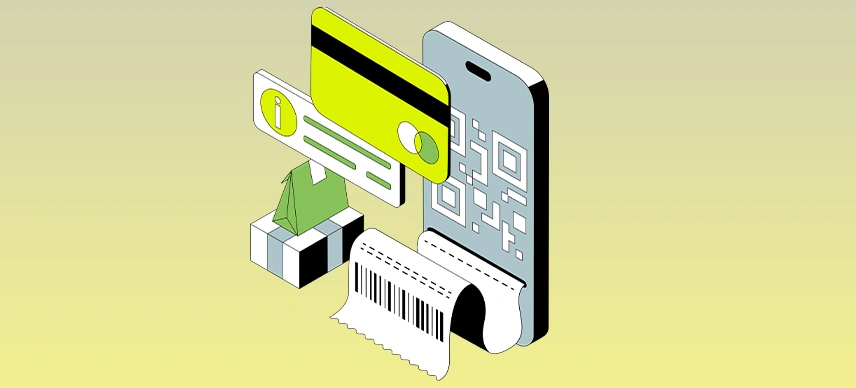
- Introduction: Overview of E-Collection System
- E-Collection System Definition and Operation
- Basic Features of E-Collection System
- Advantages and Benefits of E-Collection System
- E-Collection System Installation Process and Requirements
- Who Should Use E-Collection System?
- Conclusion: The Importance and Future of E-Collection System
- E-Collection Terms Dictionary
One of the innovations that digital transformation has brought to the business world is the e-collection system. The system, which makes the financial processes of businesses faster, more reliable and more transparent, is an indispensable part of the modern management approach.
The e-collection system is simply the digital version of collection. It is a solution that helps manage invoices and payments in a digital environment, also known as e-collection software. In this article, we will examine in detail why this technology is of critical importance for today's businesses by covering topics such as the operation of the system, its basic features, its advantages, the installation process and usage tips. In the following, you will discover how using an e-collection system can add value to your business.
Introduction: Overview of E-Collection System
The electronic collection system is an innovative solution that allows businesses to manage their financial transactions in a digital environment and automates invoice and payment processes. The rise of digital collection methods increases the efficiency of companies while reducing costs and accelerating business processes.
In modern business processes, e-collection system stands out with its basic advantages such as time saving, transparency and security. Thus, financial transactions are carried out faster and without errors, and businesses gain competitive advantage.
The prominent advantages are listed as follows:
- Fast completion of transactions
- Increased efficiency by automating processes
- Ensuring the security of financial data
The above items facilitate the processes of especially B2B businesses and help increase their profit margins.
Traditional collection methods can be a time-consuming and risky process, especially for companies with many customers, dealers or sub-dealers. Problems such as delayed payments, deposits to wrong accounts, and manual tracking of receipts can negatively affect the cash flow of businesses. For example, manually checking hundreds of payments each month makes it difficult to detect missing or incorrect transactions and causes disruptions in financial management. At this point, e-collection systems offer businesses speed, security and convenience by automating collection processes. Thanks to bank integrations, payments are instantly displayed in the system, manual transactions are minimized and financial management becomes more controlled. If you are also experiencing such difficulties in your collection processes, e-collection systems can offer a solution just for you.
E-Collection System Definition and Operation

E-collection system is a solution that allows businesses to manage their financial processes in a digital environment and automates invoice and payment transactions. It replaces manual processes and saves time and labor, while also minimizing the error rate. Also called e-collection software, the system has become an important part of the digital transformation process.
While it accelerates business processes and increases the competitiveness of businesses, it also provides a more controlled and orderly structure in financial transactions.
Basic Concepts of E-Collection System
In order to obtain detailed information about the e-collection system and its operation, it is necessary to first know some basic concepts within this subject. If you are unfamiliar with the system and are thinking of experiencing it for the first time, learning the terms below will help you benefit more from this guide.
- Digital Payment: Payment transactions made electronically eliminate the use of cash or paper invoices.
- Automation: Automating processes such as invoicing, payment tracking and reporting reduces human error and increases processing speed.
- Integration: The e-collection system ensures data flow by working in harmony with other corporate systems such as accounting, dealer management and stock control.
The basic concepts explained above are critical to understanding the operation of the electronic collection system and the benefits it provides.
How Does the E-Collection System Work?
- User Registration and Information Entry: Businesses register on the system and enter the necessary financial and customer information.
- Creating Invoices and Payment Transactions: The system automatically creates invoices and initiates payment transactions based on the entered data.
- Automatic Notifications and Tracking: Automatic notifications are sent about payment statuses and due dates, reducing the risk of delays and errors.
- Reporting and Integration: Transactions are presented in detailed reports and integration with other systems such as accounting and dealer management is provided.
Basic Features of E-Collection System

The E-Collection System offers basic features that allow businesses to manage their financial processes in a secure, integrated and flexible manner. Thanks to these features, invoicing, payment tracking and reporting processes are carried out faster and more accurately, while the competitiveness of businesses increases in the digital transformation process. As a result, the advantages offered by the system contribute significantly to increasing efficiency by reducing costs.
Security and Data Protection
Data security is one of the most important priorities of the E-Collection System. The financial data of the businesses is protected with strong encryption methods, access controls and regular backup processes. Thus, the integrity and confidentiality of the data is ensured at the highest level.
- Protecting data with strong encryption methods
- Limiting user access and regular authorization control
- Preventing data loss with automatic backup systems
The listed security measures maximize the integrity and security of data within the e-collection system.
Easy Integration and Use
The e-collection system has the ability to integrate with various software systems such as accounting, dealer management and stock control. It contributes to the uninterrupted data flow and more efficient business processes.
Thanks to its user-friendly interface, the system can be easily used with minimal training and fast results can be achieved in daily operations. This makes it easy to adapt to the system for both technical experts and general users.
Customizability and Flexibility
The e-collection system offers a flexible and customizable structure according to the different needs of businesses. The system can be modified to adapt to the existing infrastructure of the business from the installation stage; functions such as invoicing, payment tracking and reporting can be arranged according to the specific needs of the business.
The flexibility mentioned makes electronic collection software an ideal solution for businesses of all sizes. Thanks to the customizable structure, businesses increase their competitiveness by supporting their digital transformation processes.
Advantages and Benefits of E-Collection System

The e-collection system offers tangible benefits that increase efficiency, reduce costs and optimize processes by accelerating financial transactions during the digital transformation process of businesses. Thus, manual errors are minimized, transactions are carried out with automation and all data is managed through a central structure.
Here are the main advantages the system provides to businesses:
- Increased Productivity: Thanks to automation, processes are completed faster and more accurately. It allows employees to focus on more strategic tasks.
- Cost Advantages: Unnecessary expenses are minimized thanks to the reduction of manual errors and automatic reporting. It helps businesses use their budgets more effectively.
- Process Optimization: Gathering all financial data in an integrated system facilitates data analysis and strategic decision processes. Thus, business processes are managed in a more organized and controlled manner.
- Payment Variety: It offers different collection options such as single payment or installment payment by credit card, bank transfer/EFT, mobile payment.
- Recurring and Automatic Payments: Automatic payments can be set up for subscription-based services, so customers don't have to make manual payments every month.
- 24/7 Collection Opportunity: Regardless of physical POS or bank working hours, businesses can receive payments 24/7.
- Fast Payment Approval and Reporting: Payments are instantly displayed in the system and businesses can track their financial status with instant reports.
- Customer Security and Convenience: Thanks to 3D Secure supported transactions, the risk of fraud is reduced and customers can make their payments safely.
The benefits explained clearly show that the e-collection system is an indispensable digital transformation tool for businesses. If your business wants to benefit from the advantages of receiving fast, secure and automatic payments, digitizing your processes with the e-collection system will be the right step.
E-Collection System Installation Process and Requirements
Switching to an e-collection system allows businesses to digitize their collection processes, making them safer, faster and easier. However, certain technical and operational requirements must be met for the system to be successfully established.
1. Technical Requirements
- Domain Name and Hosting: A special domain name (for example, payment.firmaniz.com) should be allocated for your business's payment page. This increases customer trust and reinforces corporateness.
- Security Certificates: A 256-bit SSL certificate is required to protect customer information. This certificate ensures the security of payment transactions and appears as a "secure connection" in browsers.
- Virtual POS and Bank Integration: Virtual POS applications must be made through banks or payment institutions. Virtual POS enables online payments with credit cards. Most banks and payment service providers evaluate the financial history of the business and approve the virtual POS application.
- 3D Secure and PCI-DSS Compatibility: Security is increased by using the 3D Secure authentication system in online payments. In addition, the system must be PCI-DSS (Payment Card Industry Data Security Standard) compliant to protect customer data.
- API and Integration Support: In order to integrate with accounting systems, ERP software or CRM, the e-collection system must offer API support. In this way, collections can be automatically reflected in the relevant systems.
2. Installation Process
The installation of the e-collection system is planned in accordance with the existing infrastructure of your business and progresses step by step. First, the technical requirements required by the system in terms of integration and compatibility are determined. At this stage, basic needs such as internet connection, server hardware, security certificates are reviewed. During the installation process, technical details are explained in plain language and supported with application examples so that users have a smooth experience.
The installation steps can be summarized as follows:
- Needs Analysis and System Selection: The most appropriate e-collection solution is selected by evaluating your business's collection processes.
- Virtual POS and Payment Methods Application: Bank virtual POS, payment provider integration and other collection methods (bank transfer, payment with QR code, etc.) are added to the system.
- Security Configuration: SSL certificate is installed, security measures in accordance with PCI-DSS requirements are taken and 3D Secure is activated.
- Integration and Testing Process: The e-collection system is integrated with the business's accounting, CRM and ERP systems. Before going live, test payments are made to ensure that the system works without errors.
- User Training and Support: Training is provided to business officials on system use, and support mechanisms are put in place for potential technical problems.
The above steps meet the technical infrastructure and hardware requirements of businesses during the e-collection system installation process. It allows them to have a smooth start to their digital transformation journey.
Who Should Use E-Collection System?
E-collection systems appeal to a wide range of users from SMEs to large enterprises because they are a solution that speeds up payment processes and reduces manual workload. However, e-collection systems provide great advantages especially in the following sectors and business models:
1. Businesses with Dealer and Sub-Dealer Networks
Manufacturers and distributors may experience delays and payment tracking problems when making regular collections from their dealers in different regions. With e-collection, payment processes are automated and each payment is instantly displayed in the system.
2. Businesses Working with E-Commerce and Subscription Model
Online collection is essential for e-commerce sites and companies that offer subscription-based services. E-collection systems allow for regular and secure payments via credit card or automatic payment instructions.
3. Educational Institutions (Schools, Courses, Study Centers)
Educational institutions such as colleges, private schools, language courses and study centers can benefit from e-collection systems to receive regular payments from student parents. It offers payment reminders, installment and secure collection advantages.
4. Site and Apartment Managements
Delays in collecting dues and other common expenses can be a major problem for apartment and site managements. Thanks to e-collection, apartment residents can easily make online payments and managers can follow the process in real time.
5. Associations and Foundations
E-collection systems provide great convenience for associations that collect membership dues and donations. Thanks to regular collection, financial processes become more transparent and manageable.
6. Freelancers and Consultants
Lawyers, financial advisors, digital consultants, and freelance professionals can speed up the collection process and manage their accounting more easily by receiving payments from their clients online.
If your business is struggling with manual collection processes, has difficulty tracking payments, or wants to offer customers more flexible payment options, e-collection systems are the ideal solution for you.
Conclusion: The Importance and Future of E-Collection System

With the basic advantages we have discussed in the article, the e-collection system stands out as a critical tool that accelerates the financial processes of businesses, increases efficiency and reduces costs in the digital transformation process. Features such as the installation of the system, security measures, integration and ease of use provide operational efficiency to businesses.
With this system, businesses increase their competitive power by benefiting from significant advantages such as transparency, automation and data security. The innovative features offered by the electronic collection system support businesses to move forward with solid steps into the future. Contact us now to get more information and start evaluating the system!
E-Collection Terms Dictionary
If some of the terms in the guide content you are reading seem unfamiliar to you, you can use the dictionary below. The meanings of all the terms have been brought together and listed for you.
- Domain Name: The specific web address allocated for the business's payment page (e.g. payment.yourcompany.com).
- 256-bit SSL Certificate: A security certificate that ensures the security of payment transactions and protects data by encrypting it.
- Virtual POS: A virtual payment infrastructure provided by banks or payment institutions that allows businesses to receive online credit card payments.
- 3D Secure: A security protocol that provides additional security in online shopping and requires the cardholder to verify their identity.
- PCI-DSS Compliance: Payment Card Industry Data Security Standard; international standards set to ensure the security of customer payment information.
- API (Application Programming Interface): Programming interface that enables the integration of the e-collection system with other software such as accounting, CRM and ERP.
- Automatic Payment Instruction: A system that allows automatic collection at certain intervals (commonly used for subscription services).
- 24/7 Collection: Digital collection feature that allows you to receive payments at any time of the day, regardless of bank working hours.
- Installment Payment: A system that allows payments made by credit card to be divided and collected over certain periods of time.
- Payment with QR Code: A method that allows the user to make payments quickly and securely by scanning a QR code with their mobile device.
The terms briefly explained above will help you better understand the e-collection system and choose the solutions that suit your business needs.
You can also read our article titled What is a Dealer Management System? Why is it Important? to discover more details.























